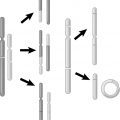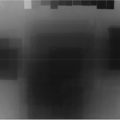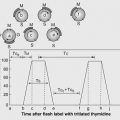22
ALTERNATIVE RADIATION THERAPY MODALITIES
SUSAN KOST AND ANDREW GODLEY
Question 1
What types of alternative radiation therapies (RTs) use high linear energy transfer (LET) sources?
Question 3
How do neutrons impart dose to the tissue?
Question 1 What types of alternative radiation therapies (RTs) use high linear energy transfer (LET) sources?
Answer 1
RTs using high LET sources include fast neutron, boron neutron capture, proton, carbon, and heavy ion therapies. This is in comparison to megavoltage photons and electrons, which are considered low LET particles.
Hall EJ, Giaccia AJ. Linear energy transfer and relative biologic effectiveness. In: Hall EJ, Giaccia AJ, eds. Radiobiology for the Radiologist. 7th ed. Philadelphia, PA: Lippincott Williams & Wilkins; 2006:106–116.
Question 2 Why do high linear energy transfer (LET) radiation sources have a greater relative biological effectiveness (RBE) compared to photons of low LET?
Answer 2
High LET radiation is densely ionizing compared to the sparse ionization that occurs with low LET photons (megavoltage energies). The damage to DNA within a cell from the dense ionization of high LET radiation occurs more often, causing difficulty for the cell to repair itself. The diminution of cell repair correlates with increased efficiency in cell killing and decreased cell survival, leading to higher RBE.
Sørensen BS, Overgaard J, Bassler N. In vitro RBE-LET dependence for multiple particle types. Acta Oncol. 2011;50(6):757–762.
Question 4 How do the radiobiological properties of neutrons differ from x-rays?
Answer 4
Studies irradiating cell cultures with fast neutron beams of various energies have shown that survival curves are more linear compared to x-rays (250 kVp). The smaller shoulder in the cell survival curve indicates little or no repair of neutron-induced sublethal damage. In addition, no change in the surviving fraction of cells irradiated by two doses separated by varying time intervals is observed. Neutrons have a reduced dependence on the presence of oxygen, with oxygen enhancement ratios of approximately 1.6 to 1.8, compared to a value of 3.4 for 250 kVp x-rays. Neutrons are also more insensitive to cell cycle. Studies have shown little variation in the survival curves of synchronized cells at different positions in the cell cycle for neutron irradiations compared to the variation observed with 60Co gamma rays.
Gragg RL, Humphrey RM, Thames Jr HD, Meyn RE. The response of Chinese hamster ovary cells to fast neutron radiotherapy beams: III. variation in relative biological effectiveness with position in the cell cycle. Radiat Res. 1978;76(2):283–291.
Hall EJ, Rossi HH, Kellerer AM, Goodman L, Marino S. Radiobiological studies with monoenergetic neutrons. Radiat Res. 1973;54(3):431–443.
Ngo FQ, Han A, Utsumi H, Elkind MM. Comparative radiobiology of fast neutrons: relevance to radiotherapy and basic studies. Int J Rad Oncol Biol Phys. 1977;3:187–193.
Question 5
For what types of cancer have clinical trials proven an advantage for fast neutron therapy?
Question 7
What beam energies are used for fast neutron-based radiation therapy (RT)?
Question 5 For what types of cancer have clinical trials proven an advantage for fast neutron therapy?
Answer 5
First generation Radiation Therapy Oncology Group (RTOG) neutron studies have resulted in statistically significant advantages for fast neutron radiation therapy (RT) over conventional (external photon and electron beam) therapy for salivary gland and prostate tumors. Other studies have shown a possible advantage to using neutron therapy for soft-tissue sarcomas.
Griffin TW. Fast neutron radiation therapy. Crit Rev Oncol Hematol. 1992;13(1):17–31.
Griffin TW, Pajak TF, Laramore GE, et al. Neutron vs photon irradiation of inoperable salivary gland tumors: results of an RTOG-MRC cooperative study. Int J Rad Oncol Biol Phys. 1988;15(5):1085–1090.
Laramore GE, Griffith JT, Boespflug M, et al. Fast neutron radiotherapy for sarcomas of soft tissue, bone, and cartilage. Am J Clin Oncol. 1989;12(4):320–326.
Russell KJ, Caplan RJ, Laramore GE, et al. Photon versus fast neutron external beam radiotherapy in the treatment of locally advanced prostate cancer: results of a randomized prospective trial. Int J Rad Oncol Biol Phys. 1994;28(1):47–54.
Question 7 What beam energies are used for fast neutron-based radiation therapy (RT)?
Answer 7
Neutron beams from hospital-based generators have average particle energies between 18 and 70 MeV.
Griffin TW. Fast neutron radiation therapy. Crit Rev Oncol Hematol. 1992;13(1):17–31.
Question 9
What is the mechanism for delivering dose in boron neutron capture therapy (BNCT)?
Question 11
What are some disadvantages inherent with boron neutron capture therapy (BNCT)?
Question 9 What is the mechanism for delivering dose in boron neutron capture therapy (BNCT)?
Answer 9
First, a boron-containing drug that is selectively taken up by malignant cells is administered to the patient. The patient is then exposed to a beam of thermal neutrons. The neutrons interact preferentially with the boron to produce alpha particles that intensely irradiate the tumor over a short range and spare normal tissue.
Hall EJ, Giaccia AJ. Alternative radiation modalities. In: Hall EJ, Giaccia AJ, eds. Radiobiology for the Radiologist. 7th ed. Philadelphia, PA: Lippincott Williams & Wilkins; 2006:407–418.
Stay updated, free articles. Join our Telegram channel

Full access? Get Clinical Tree






